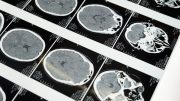Artificial intelligence (AI) and machine learning are two of the fastest-emerging technology trends in healthcare. Long talked about, they are now reaching a point of maturity when they are beginning to make a real contribution to healthcare delivery.
AI’s power lies in being able to recognise patterns in data and make predictions accordingly. This enables the development of ‘smart’ processes that could automate the analysis of clinical information and streamline workflows. When it comes to improving patient care and enhancing productivity, it has the potential to be genuinely ‘game-changing’.
In areas such as radiology, for example, using APIs (Application Program Interfaces), first to pull large quantities of imaging data straight from a vendor neutral archive (VNA) and then to run these through AI algorithms, would lead to significant time savings in diagnoses. Under the ‘expert guidance’ of a machine learning system, those lacking radiological expertise could also be taught how to read and interpret medical images more effectively.
But what will this shift to an AI-powered environment entail for healthcare organisations?
Since the effectiveness of machine learning depends on the information that feeds it, the computing mantra of ‘garbage in, garbage out’ still applies. If you think of AI as an engine, then data is the fuel that drives it. So, the more robust and accurate the quality of data sets, the better the clinical outcomes that can be realised.
That means, if you are to achieve optimal results from AI, then the process of information discovery must be complete, comprehensive and transparent.
The key to accomplishing this is finding ways to consolidate often disparate, semi-structured and unstructured data to create the most complete patient portrait possible. For most healthcare organisations this is not easy.
While Electronic Patient Record (EPR) systems are now the most significant source of digital clinical knowledge, they are designed only to capture and manage structured clinical information that fits easily into discrete data fields.
However, according to Gartner and Merrill Lynch, about 80 per cent of patient data comprises unstructured or semi-structured content, like digital photos or physician notes. That means, more often than not, digital clinical information is locked away in unconnected silos or governed by different proprietary standards.
Medical images often sit by default outside the outside the EPR, in a suite of systems that lack interoperability or store data in proprietary and incompatible formats. It’s a major challenge, when EPRs are the primary information source for patient evaluation, since it leaves many involved in critical clinical decision-making with no awareness that potentially insightful data even exists.
So, if machine learning initiatives are to be truly effective, dismantling such barriers to bring structured and unstructured data into a single unified information source must be prioritised. That requires an Enterprise Content Management (ECM) system that can handle the wide array of patient information – documents, emails, faxes, photos – both current and historic, reinforced with appropriate storage solutions, such as a VNA. This strategy will accelerate AI and machine learning, by quickly consolidating diagnostic images from a variety of healthcare sources and de-identifying the images for quick ingestion into AI algorithms, enabling the delivery of the best possible care and patient experience.
Of course, AI is not an immediate solution that will lead to hands-off healthcare. As Eliot Siegel, MD Professor of Radiology at the University of Maryland School of Medicine has put it, algorithms “don’t have an idea of common sense,” so humans will still be essential in making appropriate clinical judgements. AI isn’t a replacement for doctors, it’s just a means to make them more effective.
Though adoption has been slower than in many sectors, previously behind-the-scenes enthusiasm for artificial intelligence is now being reflected in the growing numbers of organisations indicating their intention to spend more on artificial intelligence and machine learning. So this is an exciting time for AI in healthcare as we move from thinking about ‘what’s possible’ to focus increasingly on its realistic application – AI is already helping dermatologists to detect skin cancer more accurately.
While the really ground-breaking initiatives are still a little way off, machine learning is poised to offer immediate value by taking on the tedious processes that underpin modern healthcare delivery but which consume so much time.
This will be an important first step in a technological transformation that will, according to a report by the McKinsey Global Institute, have an impact overall which is 3,000 times greater than that of the Industrial Revolution.
About the author
Saduf Ali-Drakesmith is a diagnostic radiographer and imaging expert with Hyland. www.hyland.com





